The genius of Rapture
A deep dive on BioShock's underwater city to celebrate its 10-year anniversary.
It's now 10 years since we first plunged deep into the Atlantic Ocean and were beguiled by BioShock and the submarine city of Rapture, one of the finest environments in games.

The word unique gets tossed around a little too freely nowadays, but the claustrophobic yet magical underwater city of Rapture is surely worthy of it. I would go one further: Rapture is so special, powerful and memorable that it's worthy of what the landscape and environment design industries call a genius loci. In more everyday speak, Rapture has an incredible "sense of place".
Location, location, location
One of the roots of Rapture's identity is in its location: the Atlantic seabed. We know its location was chosen specifically so Rapture could be removed from the human geography of planet earth, but it retains an intimate connection with the natural geography of our planet. The connection starts normally enough: Rapture is anchored to the earth's crust; spreads outwards and reaches upwards; and was built appropriately according to the topography. However, the importance of location and a connection to earth extends beyond layout and the structural - it is vitally important to the city's ability to function. Rapture relies on its location to harness power from geothermal vents on the ocean floor - a clear central point of intense energy that both the city and its genius loci can form around. As an established real-life source of power, this gives a realistic and relatable quality to Rapture. This functioning capacity is clear at Hephaestus, home of the Hephaestus Power Facility, while the importance of energy to the city is also highlighted in that area through its imposing architecture and design: its high ceilings, revealed conduits, humming pipes and enormous gears.
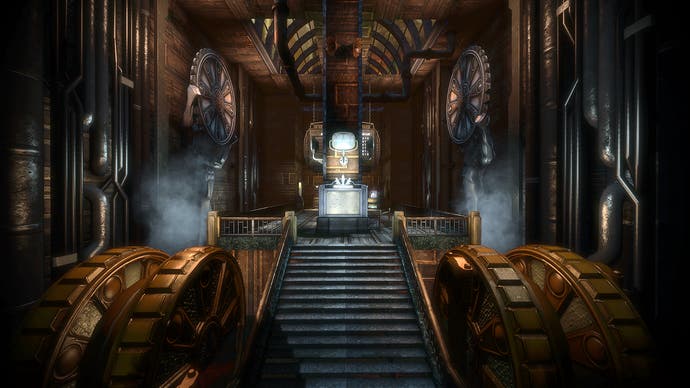
Coordinates mark the city's and lighthouse's position. Using a tangible, mark-it-on-a-map location invites a sense of intrigue and mystery and also roots the city and story ambiguously but tantalisingly close to our real-world.
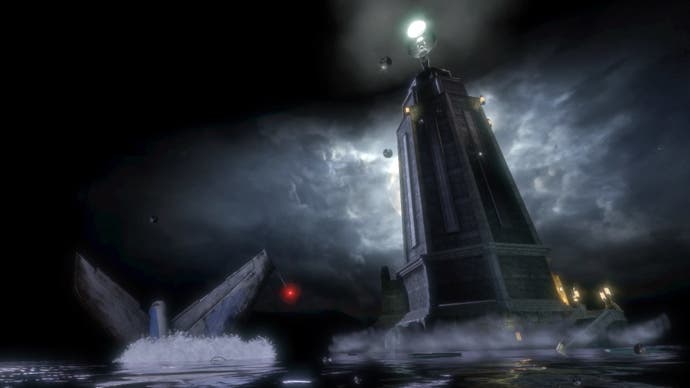
Rapture's Jules-Vernian location on the ocean floor is eerily magical in itself, but combined with a marked location in our real world, an intimate relationship with earth's raw power and the visible depiction of this energy that makes the city feel alive and functioning, a strong centre for its genius loci is created.
A 'real' underwater city
The majestic idea of a 'real' underwater city is another important contributor in creating Rapture's sense of place. Much like with Jules Verne and the myth of Atlantis, we can't help but be amazed by Rapture, such is our fascination with the mysterious depths of the oceans. By listening to audio logs and recovering clues, we piece together a backstory and history of Rapture as a place. This reinforces our curiosity about the underwater metropolis as a distinct, working city, not just a made-up place we are dropped into to play and shoot bad guys. This story paints a picture, the magic and majesty supported by processes and systems that provide a fascinating but functional side to its sense of place.
Designed into the city are systems and technology that perform pivotal roles. All the hundreds of shops, businesses and services in Rapture, for example, combine to create a tangible and believable sense of working commerce, interaction and economy, even in the most dilapidated areas. The travel systems of the Bathyspheres and the Atlantic Express train enable us to directly experience connectivity in the city. Instead of just observing these systems, or them being employed as a background element, we, if only for a little time, are able to experience Rapture as a Rapture citizen would. The connectivity between areas of Rapture feels real and designed purposefully, which aids the realistic feel to its genius loci.

This is enhanced further in Minerva's Den, where we experience the retro-futuristic computer systems integral to the city; Rapture Central Computing, or 'The Brain of Rapture'. There we gain an insight into the importance of a system in a thriving Rapture but also after its fall, with The Thinker and the systems of Rapture Central Computing trying to maintain functionality.

The glue that holds together all the parts of this functioning, magical underwater city are its people. People play a huge part in bringing a genius loci to life by illustrating interactions, consequences, successes and failures at the human scale. This is particularly true given the change that occurs during Rapture's life and the effect it has on its people: the gleaming place seen in Burial at Sea filled with seemingly-happy citizens to its decaying and rusty state in BioShock and BioShock 2, where the remaining Adam-crazed inhabitants do not seem to care that the city is slowly but surely disintegrating around them.
Philosophical leanings
Rapture oozes Andrew Ryan and his Randian philosophy, and you can feel it in its very composition and at every turn. It is an invisible hand guiding everything that is both tangible and intangible about Rapture's genius loci. This is evident in the audio logs and video messages, but there is a clear physical demonstration of this at the very beginning of BioShock.
As the lights punch on inside the lighthouse, we are greeted by the immense bust of Ryan and the provocative phrase 'No gods, or kings, only man'. This is the first physical manifestation of the philosophy in Rapture and it's even more interesting when we remember the definitions of genius loci. The Roman roots of genius loci refer to 'the presiding god or spirit of the place', and it is difficult to ignore the presentation of Andrew Ryan being the presiding 'god' of Rapture.
Despite Ryan and Rapture being distinctly anti-religion, this 'godly' element of Rapture's founder, presiding over the entrance to the city, goes some way to provide that spiritual or supernatural edge to a place's genius loci. The evolution in genius loci's meaning from the original Roman one, is also particularly apt for Rapture as it seems to meet both definitions: while Ryan clearly appears to be the presiding spirit of Rapture, there is a clear picture developing of Rapture's own distinct genius loci - its prevailing atmosphere or character - in its capacity as a place.
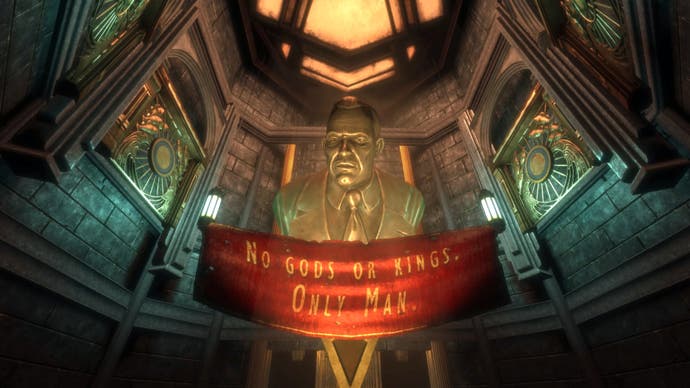
Real-life designs that have underlying layers of meaning are more powerful, and the philosophical underpinning of Rapture, woven as it is into the very fabric of the city, gives it so much more depth. The park of Arcadia is a good example of this. Originally created by scientists and botanists on Ryan's payroll as a way to provide oxygen and agriculture for Rapture, it was free to the citizens for a time, but soon changed to an entry-fee attraction after Ryan decided it warranted payment. His decision is prefaced by that memorable audio log in which he describes burning down his own terrestrial park to avoid opening it up as a public service when living in America.
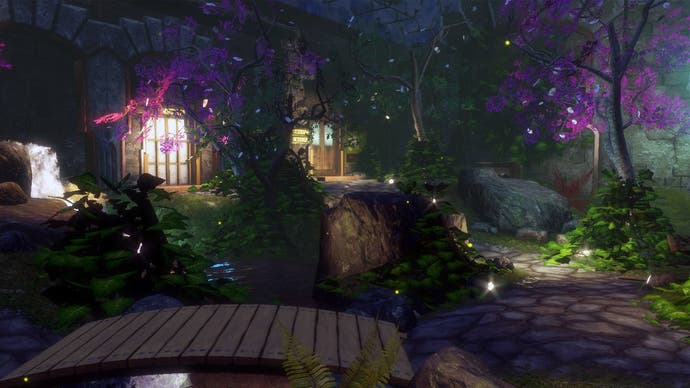
The effects of the philosophy on particularly areas and their inhabitants were particularly clear elsewhere when divisions and cracks began to form in the society. Such cracks led to many people resenting Ryan and the successful, 'elitist' class of Rapture, especially when they continued to deny those who were struggling any form of societal aid. Those who were struggling often became increasingly desperate and this is clear in the rougher, seedier districts of Rapture, such as Pauper's Drop. These areas swelled as people slid further behind in Rapture's competitive society. Yet, even in this situation someone was ready to capitalise and profit as Augustus Sinclair demonstrated by creating the Sinclair Deluxe.
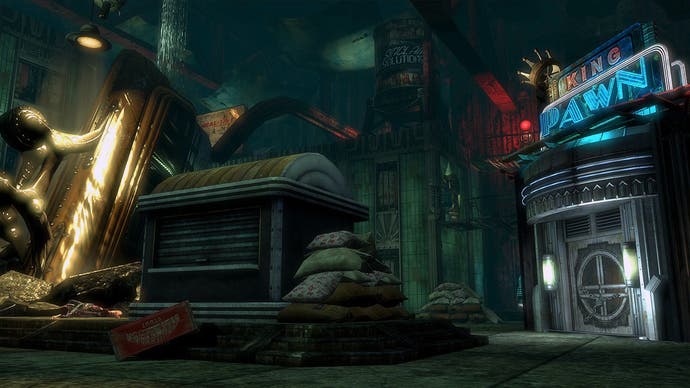
By being the very foundation for every trade, business, and change, in the city, BioShock's philosophy creates a strong atmosphere for Rapture. Learning how it affected Rapture's people contributes to the city's compelling genius loci.
A submarine art deco city
Rapture's incredible aesthetic and design are integral to its character. These tangible elements of style, the imposing but cool architecture, the artwork seen throughout and the finish of everything from shop fronts to statues; all of these contribute greatly to Rapture's genius loci.
Art deco encompasses all of Rapture's tangible aesthetic. Rapture's skyline is highly evocative of the New York skyline, and with famed, landmark buildings such as The Empire State Building and The Chrysler Building being constructed just before Rapture's 'time', it could easily be said that Rapture's architects, the Wales brothers, were influenced by them and looked to recreate a similar style and impact.
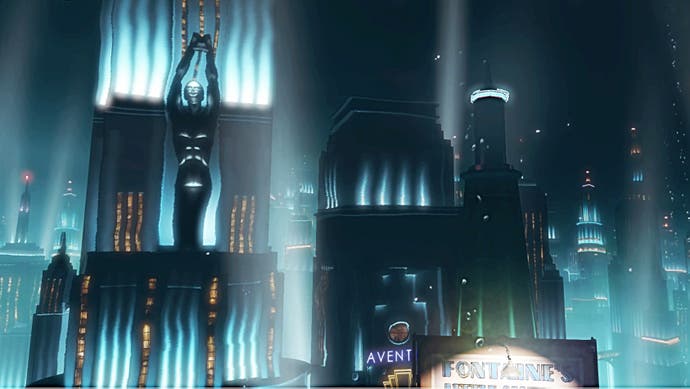
Inside, art deco influences continue to guide design and decoration with grand spaces luxuriously adorned with sculptures and decorated with high end materials, also finished with expert craftsmanship, designed with geometric forms, shapes and lines. In every square, bar, shop and business there are gleaming, large, parquet floors, upon which large-scale seats and furniture sit that feature sweeping curves and long straight lines, finished with shining metal. Combine this with the artwork that adorns the walls, and this style really comes to life. Be it Atlas's posters, hung artwork or plasmid advertisements, all pieces are comprised of bright, contrasting colours, reflecting the confident and opulent nature of art deco, as well as representing the level of luxury aspired to throughout Rapture.

Art deco even guides the design of underappreciated and underrated features in Rapture. The geometric and elaborate design of more normal elements such as the air locks, partition doors and little sister vents show how deep the design went. These also add context, their often-metallic construction lending a dash of industrialism to Rapture's reliance on stark and strong metalwork.

Rapture is not just a place inspired by art deco, it is art deco. It encompasses all the key aspects of art deco architecture - symmetry, strong geometric, often streamlined forms. It encapsulates a city based on a cohesive design strategy. The sheer weight of the engineering task necessary for Rapture's construction is enormous, but combining that with beautiful, handcrafted finishes and furnishings only serves to increase the sense of awe.
Art deco fits beautifully into the theme of Rapture as a utopia oozing opulence, but it also fits the time of the city's creation, which helps to make a aesthetically authentic sense of place. And it's one that survives the test of time - the style is preserved throughout, from its gleaming best in Burial at Sea, to its inevitable state of disrepair, rust and neglect.
Time and nostalgia
There is an important, prevailing sense of time and nostalgia apparent in Rapture. Rapture does a fine job of crystallising a time often fondly looked back on for its coolness in style and suaveness of people, a time when every man wore a hat and suit and the language was full of quirky phrases, such as Sinclair's reliance on the word 'sport' and the use of poker terms in everyday conversation. Add in the popular music of the time playing throughout, and the voices and sounds of Rapture go a long way to creating city's very own authentic and believable soundtrack.
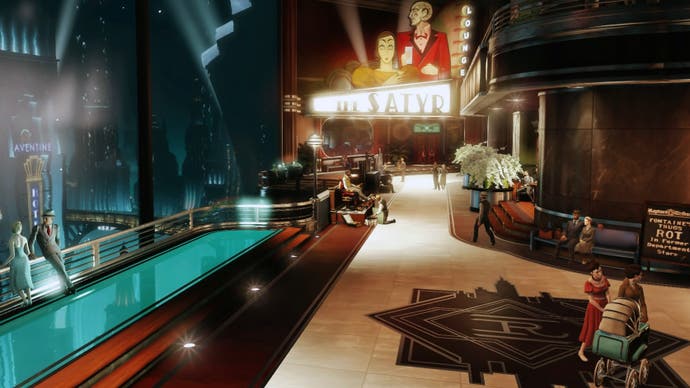
The other dimension to the factor of time and nostalgia comes from the player's point of view. In terms of the intertwining narratives the games have created, a last visit to Rapture 10 years later seemed apt, but also, after playing through the equally magical Columbia in Infinite, I, the player, yearned to get back to Rapture's eerie and seductive environment for one more atmospheric hit.
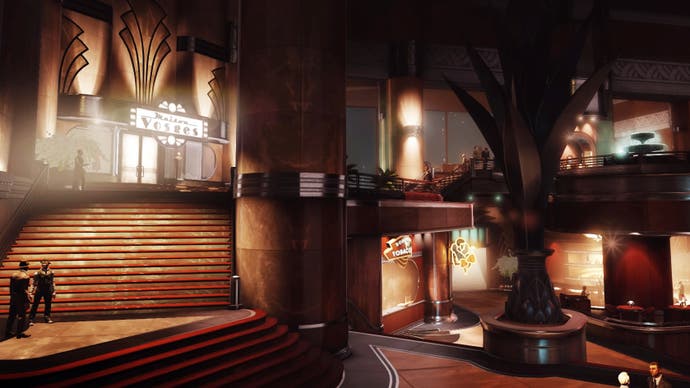
The effect of time we see on Rapture is extremely powerful: the city changes, its society evolves and the infrastructure and explorable spaces age. Rapture goes from an immaculately-finished city to an ephemeral, rusty collection of buildings with creaks and leaks, all the while maintaining a powerful sense of place, with a strong and clear atmosphere.
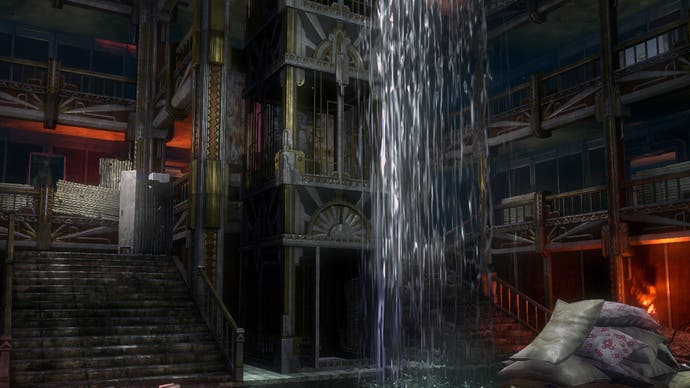
The layering of all Rapture's characteristics, from the depth of its stories to its thorough backstory and philosophical underpinning, weave together seamlessly to create an atmospheric and memorable place. The level of detail in its design and its depth of meaning means Rapture achieves a genius loci so strong it stands out as one of the most impressive video game locations ever created. Rapture has left a permanent mark on us so that, even 10 years after it made its debut, it still shines bright.









